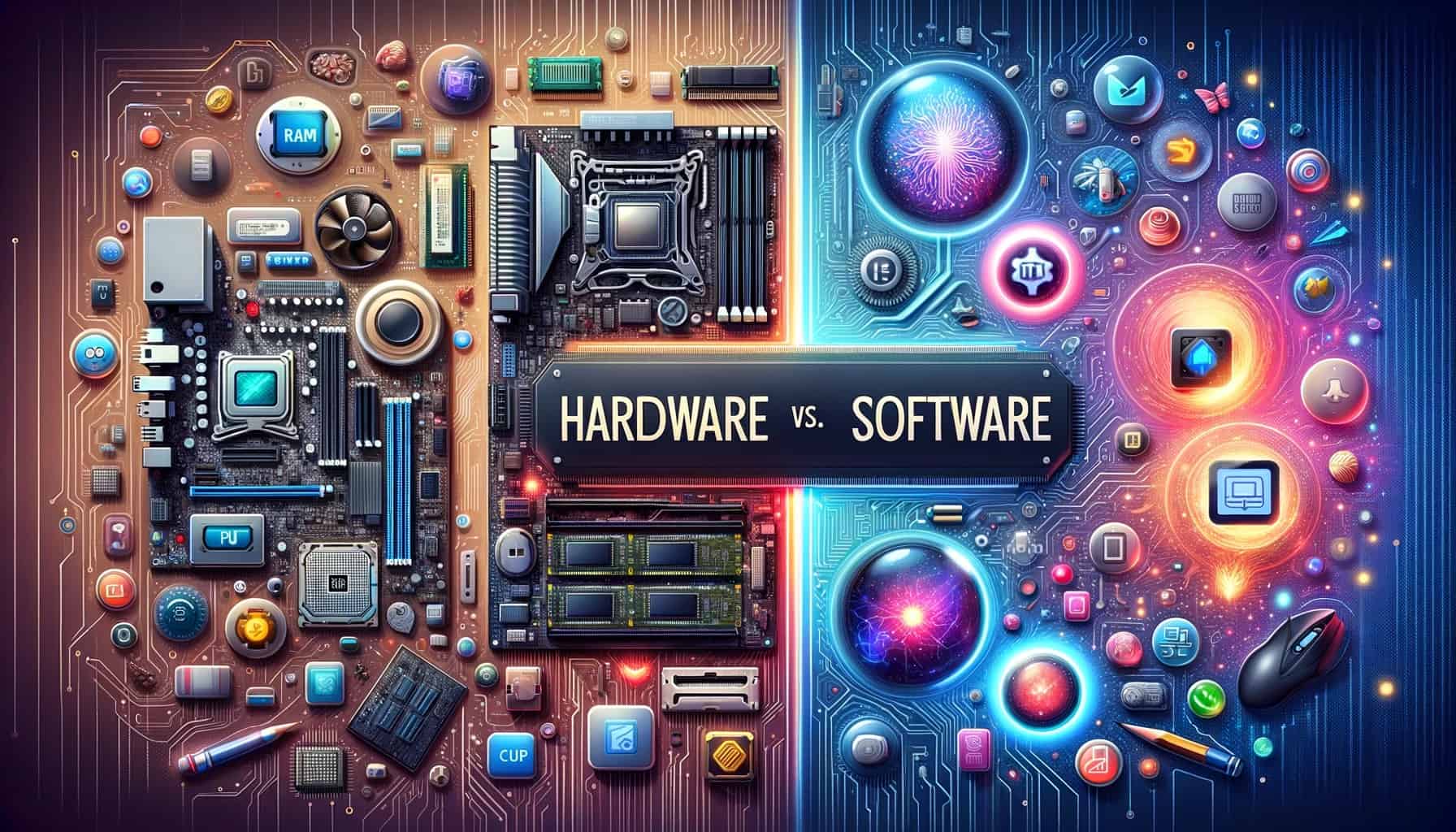Difference between hardware and software
by Yogi P - November 15, 2023
Difference between hardware and software | Hardware vs Software
In the modern age, the terms ‘hardware’ and ‘software’ are as commonplace as ‘electricity’ and ‘light.’ Despite their ubiquitous nature, there’s often a cloud of ambiguity surrounding their definitions and differences, especially for those not steeped in technological jargon.
This article endeavors to lift this fog, offering a lucid distinction between hardware and software for the layman and the tech-curious.
What is Hardware
Hardware refers to the tangible, physical components of a computer system or electronic device. These are the pieces you can touch, see, and connect physically. From the Central Processing Unit (CPU) that serves as the brain of the computer to the mouse in your hand, hardware is the skeleton and musculature that make up the body of your device.
Key Aspects of Hardware:
- Tangibility: You can physically handle hardware.
- Stasis: Hardware does not change form or function without a physical alteration.
- Durability: It has a finite lifespan and may require repair or replacement over time.
- Operation: Hardware operates on electrical signals and mechanical movements.
What is Software
Software, in contrast, is the collection of data, programs, and instructions that tell the hardware what to do. It’s the invisible force that brings life to the computer’s metal and plastic body, enabling it to perform tasks from the simple act of writing a document to the complexity of simulating weather patterns.
Key Characteristics of Software:
- Intangibility: Unlike hardware, software cannot be touched—it exists as digital data.
- Dynamism: Software can be changed, updated, and distributed without altering the physical components of a device.
- Dependence: Software requires hardware to function, while hardware can exist without software.
- Variety: There is a vast range of software, from operating systems to applications to utilities.
Table Summarizing the Differences Between Hardware and Software:
| Aspect | Hardware | Software |
|---|---|---|
| Nature | Physical components like CPU, hard drives, and RAM. | Programs and operating systems like Windows, iOS, and applications. |
| Tangibility | Tangible and can be physically handled and seen. | Intangible, existing as code and data within the hardware. |
| Changeability | Typically remains unchanged unless physically altered. | Can be easily changed, updated, or replaced with new versions. |
| Function | Performs specific physical operations and tasks. | Provides instructions to the hardware to perform tasks. |
| Examples | Monitors, keyboards, motherboards, processors. | Microsoft Office, Adobe Photoshop, Google Chrome, Linux. |
The Symbiotic Relationship
While hardware and software are distinct, their relationship is symbiotic. Hardware without software would be akin to a light bulb without electricity—potential without actualization. Conversely, software without hardware is like electricity without a conduit—power without a point of application.
Importance in Technology
The evolution of hardware and software has driven the technological revolution. Each new hardware innovation paves the way for more sophisticated software, which in turn pushes the demand for more capable hardware. This cycle of advancement is the heartbeat of tech progress.
Everyday Examples
In everyday life, the distinction between hardware and software is evident. When you purchase a smartphone, the screen, battery, and chips are the hardware. The Android or iOS operating system, along with all the apps you download, constitute the software.
Impact on Industry
In industry, the hardware-software divide is equally consequential. The manufacturing sector relies on hardware like machinery and robots, which are controlled by software that directs their tasks.
The service industry uses hardware such as servers and data centers, which are useless without the software that manages the data they hold.
The Future of Hardware and Software
The future of both hardware and software is an exciting vista. As hardware becomes smaller, faster, and more energy-efficient, software grows ever more sophisticated, with artificial intelligence and machine learning heralding a new era of possibilities.
Conclusion
The digital universe is underpinned by the dual pillars of hardware and software. Hardware is the vessel, the essential physical form; software is the essence, the guiding spirit. Together, they create a synergistic relationship that propels the engine of modern computing and technology.
As we advance into the future, the lines between hardware and software continue to blur with cloud computing and virtualization, but the fundamental dichotomy remains.
Understanding this dichotomy is key to comprehending the digital tools that have become so integral to our personal and professional lives.












